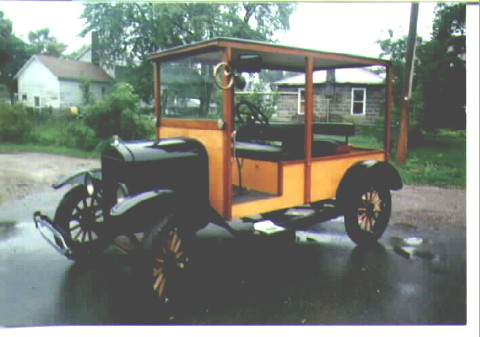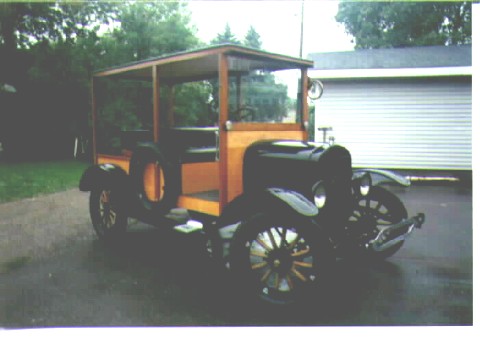1922 Ford Model T Depot Hack.


A Short History
of Station Wagons in the USA
And, why do they call them 'station wagons' anyway?
First of all, let's get this out in the open - station wagon history is not exactly clear cut, and there are differences of opinion on just what is a station wagon. While the specific facts presented here would be difficult to argue separately, overall what you are about to read is just one interpretation of those facts. So, with that out of the way, we start with:
In the beginning, there was confusion....
OK, lets start with some definitions - what is a 'station wagon'? Well, the very first station wagons were called 'depot hacks' - they worked primarily around train depots as hacks (taxicabs). The modified back ends that made them depot hacks were necessary to carry large amounts of luggage - everyone traveled by train then, remember, and you needed a car that could comfortably carry people and large amounts of luggage from the train station to home. They were also called 'carryall's' and 'suburbans' (a name Plymouth used on their wagons until the late 1970's). 'Station wagon' was just another derivative of 'depot hack'; they were vehicles that were used as wagons (to carry passengers and cargo) from (railroad) stations.
Some people define station wagon history as starting with the 1923 Star (the first 'production' station wagon), and ending with the 1996 Buick Roadmaster Estate Wagon. This definition embodies only the classic, stretched wheelbase, rear-wheel drive vehicle, derived from a standard production automobile (usually sedan or hardtop) chassis.
Stationwagon.com's definition is actually more broad, encompassing the earlier depot hacks, and continuing into the smaller, front, rear, or all-wheel drive wagons of today. While today's vehicles are certainly not full-sized, they continue the tradition of being built from a (sometimes stretched) sedan chassis, and embodying some form of rear tailgate.
Pre-war predecessors
While they do not meet the definition of 'standard production', the first station wagon would be one of the numerous variations of the Ford Model T chassis. While Ford didn't build a production wagon until years later, many small independent manufacturers bought a chassis from Ford and put a wooden wagon body on it. Ford began selling this bare chassis in 1910 for $700. Which manufacturers built these wagons? Well, there were more than a few - it was estimated that in 1909 there were 551 American car manufacturers!
We're not sure exactly when the term 'station wagon' generally replaced 'depot hack', but it was sometime between 1923 (with the introduction of the Star) and 1929, when the first station wagon from the American 'Big Three' was introduced as a Ford Model A. By 1937, Ford became the first manufacturer to produce and assemble their own station wagon (Model A production was still farmed out to outside suppliers). Pontiac's first station wagon was produced as a 1937 model (in the Deluxe Six series), and it's model number was 'STAWAG'.
An interesting data point: the 1941 Ford V-8 DeLuxe woody wagon was the first factory-built Ford of any kind to break the $1,000 base price barrier.
There were woody wagons well before Ford, however - there was a 1931 Dodge Series DH Six woody station wagon, for instance. The first official factory Plymouth station wagon appeared in 1938 (the P6 DeLuxe Westchester Suburban wagon, although the bodywork was still done out-of-house by U.S. Body & Forging). Chevrolet's first woody was also a 1940 model (the Special DeLuxe).
Two significant wagon milestones were recorded during this time:
- In 1938 Dodge/Plymouth introduced the P6 Westchester Suburban, the first station wagon that was classified as a car rather than a commercial truck. This was an evolution of the earlier (1933-1937) Westchester Suburban (also built by U.S. Body & Forging Company) that was built on a Dodge 1/2-ton commercial chassis with the front clip coming from a passenger car.
- In 1941 Chrysler introduced the Town & Country station wagon, which was based on a four-door sedan (rather than being built on a separate body). Interestingly, it was originally introduced as being a more versatile car, not a station wagon.
jimgaasch@gaasch.net



